Global Surface Intelligence

During the last 12 months, GSI has measured over 100 million acres of commercial forestry, real estate and carbon resources across the world with a focus in the USA & Canada. It’s main customers are the market leaders in sustainable carbon finance, real estate, forest funds and government.
The Company has had to carefully review its business operations and costs to protect and preserve its position during the COVID pandemic. It explored, and took receipt, of various grant-funded programmes which were made available by both the Scottish and UK governments to support GSI during this very difficult period.
Despite these unprecedented circumstances, GSI has had, on balance, a positive year continuing the good progress and triple digit growth achieved in both 2018 and 2019; this has been largely based on the Company’s focus on the commercial forestry market for both surveying and the associated carbon discovery opportunities. It has continued with the closure of contracts in its core North American markets of USA and Canada; here, it has retained and expanded revenue with its largest customer; captured a landmark and significant new customer in North East USA which was as a result of referral of acknowledged forestry experts; this has helped to build our emerging reputation as a leading provider of forest measurement and monitoring.
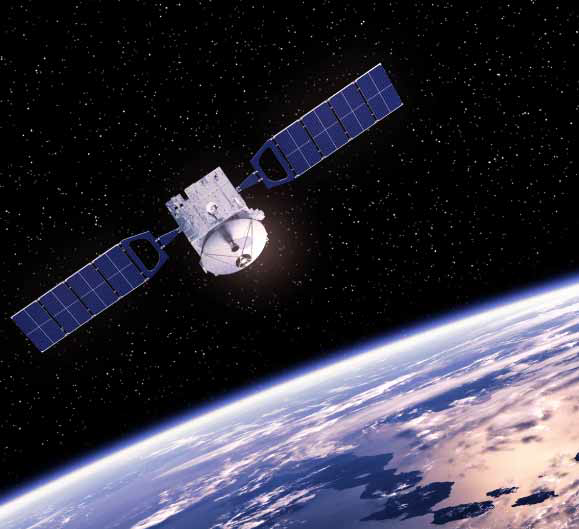
The journey starts 40,000 miles away in space.

More than 7.08 billion people live on planet Earth with 12.2
billion hectares of biologically productive land and water.
Outside of North America, GSI has closed sales on ForestMind, a co-funded project between the European Space Agency (ESA) and major UK-based food retailer Sainsburys, to investigate the provenance of international food supply chains; and a UK Space Agency funded project with another Edinburgh company, Omanos Analytics, to support a Kenyan Geothermal Survey project.
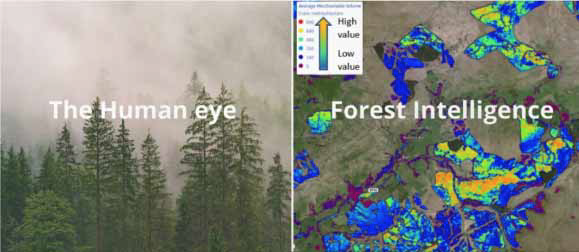
The core team in Edinburgh has been increased in 2020 with addition of additional environmental and data science resources and forestry expertise in Canada. This has been underpinned by the acquisition of key personnel for the further development of the cloud based (Amazon Web Services) machine learning applications knowledge on cloud/AWS.
During the second half of 2020 GSI was granted the registration of a US patent on the application of machine learning to remote sensing (from satellite) data analysis techniques; this is first of its kind in the US market. It gives the Company both a significant technical advantage in its chosen marketplace and a strong and defensible competitive position.
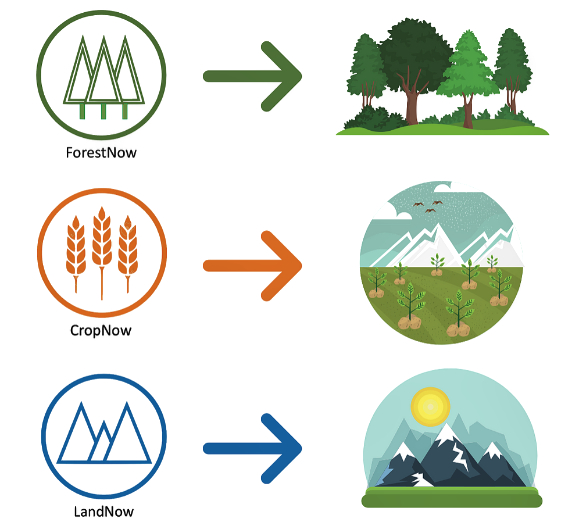
One explanation for this level of success lies with GSI’s use of remote assets —in this case satellites — which are well positioned to compete with the more traditional and more costly methods currently deployed in the forestry industry like aerial photography, on-board drone sensors and manpower and ground based reference data collection. Satellite data and GSI’s analysis ready data provide the customers with three critical disruptive capabilities: firstly, an ability to survey much larger areas of forestry in a more environmentally conscious way than the more traditional methods of measurement, such as through the use of aircraft or “boots on the ground”.
Secondly, it provides the key information relating to tree species and breast diameter demanded by the forestry owners; and thirdly, GSI is able to deliver this data at a per cent per acre cost versus a per dollar per acre rate.
GSI is one of a growing number of downstream space applications companies based in Scotland and in the wider vibrant and growing Scottish space sector. Scotland has a unique space ecosystem which fits within the accepted definition of “new space” and has an organic cluster that has developed – and continues to develop — primarily along a 40 mile corridor in central Scotland.
Being able to leverage and play our part in this fast growing European space hub allows GSI to take advantage of a business environment that is fully supported and promoted by both Scottish and UK government and in fact, rather than being hindered due to the challenges of 2020, is being positioned to play a key role in the post-pandemic ‘bounce back’.

This combination of a strong, well-supported base combined with a growing, international addressable market has ensured that GSI is well-equipped to make it through such a difficult year and the firm is well-placed to return to the high levels of growth achieved in previous years as the company moves into 2021.
www.surfaceintelligence.com

Author Peter Young has more than 25 years’ experience in the space sector as an industry leader and senior manager. As CEO of Telespazio VEGA, one of the UK’s largest space services companies, he gained a thorough understanding of the European and world space markets. He has built a portfolio of industry positions that include Co-Founder the Scottish Space Leadership Council (SSLC) and Executive Chairman of Global Surface Intelligence. He is deeply engaged by the challenge of how satellite data and analytics can be used to realistically support the increasing number of climate action and sustainability initiatives.
ICEYE
2020 has been an exciting year for ICEYE, the global leader in smallsat, synthetic-aperture radar (SAR) technology. This year was characterized by remarkable developments and innovations in technology, new SAR capabilities and products, partnerships, growth of personnel, and the closing of an extraordinary, oversubscribed funding round.
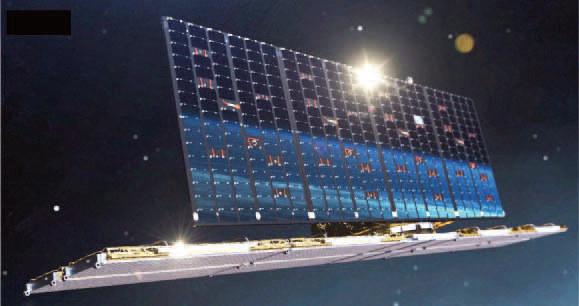
Artistic rendition of an ICEYEX2 SAR smallsat onorbit.
Image is courtesy of the company.
ICEYE has been continuously growing and is established as a global leader in small satellite SAR technology and imaging services. ICEYE designs, manufactures and operates its SAR satellites in-house, including SAR products and services. The company’s growth in 2020 includes the nearly doubling of our employee count, increasing our number of satellites in orbit, new cutting-edge SAR satellite technologies, new SAR imaging products as well as new strategic partnerships. While 2020 has seen global turmoil, looking back at an entire range of new developments offers a sense of optimism for 2021.
Secured Funding
This year, ICEYE raised a remarkable amount of $87 million in Series C funding from a wide base of both US and European investors. To date, ICEYE has received a total of $152 million in financing. What has continued to invite interest from the financial community is ICEYE’s strong business and operational model. The company has been in the unique position that our financing round was significantly larger than originally planned, which is a powerful sign of trust from the investors. This round of investment ensures the growth of ICEYE’s SAR satellite constellation in 2021, with the revisit rate goal of multiple times each day for any location on Earth.
This funding is especially noteworthy as it occurred during the economically turbulent year of 2020. Despite the new challenges facing the aerospace industry, ICEYE was able to achieve its goals and continuously grow its satellite constellation. Launch delays have affected the company’s launch plans, with the good news that this seems to be getting better as months roll forward.
Continued Growth
This year, ICEYE has further developed and established its satellite maneuvering with electric propulsion on-orbit. In addition to performing routine collision avoidance during 2021, ICEYE’s spacecraft were maneuvered to enable single day, ground tracking, repeat capabilities. These capabilities will be key to 2021’s efforts to enable interferometric data stacks, and coherent change detection.
Overall, ICEYE has already successfully launched seven satellite missions; the first-ever, small SAR satellite was launched in January of 2018. This year, ICEYE launched two satellites and two more are scheduled to join the company’s constellation by year’s end. ICEYE is currently capable of manufacturing SAR satellites at a rate of one each month, with plans to expand manufacturing into the US. Every newly launched satellite consists of the latest state-of-the-art technology available.
 ICEYE SAR detail.
ICEYE SAR detail.
Demo of SAR Imaging Capabilities
The ICEYE SAR satellites continue to go through an unprecedented development cycle for achieving new imaging capabilities. Recent demonstrations include SAR video, 25 cm resolution imaging and Interferometric SAR data examples.
SAR video is an innovative imaging and processing technique that can be used for advanced analysis of movement from a single satellite pass. SAR video is based on a technique that uses very-high-resolution SAR satellite acquisition, where a SAR satellite is set to stare at an individual point location for an extended time of 20 seconds or more.
This data acquisition can be turned into moving image sequences. These videos allow for further analysis of movement over ground and maritime scenes that happen during an individual satellite pass. This on-orbit demonstration opens new use cases for data users for analyzing movement from the company’s SAR imagery.
During 2020, ICEYE completed the development of a very high resolution SAR imaging capability of 25 cm for data users, the finest classification of resolution available in the commercial SAR market. With this new technology, ICEYE’s smallsat constellation meets the same resolution class provided by larger and more costly conventional, commercial SAR satellites operating at their highest performance.
This year, ICEYE was also first in the world to demonstrate interferometric capabilities from small SAR satellites. The ICEYE SAR satellite constellation will see its first, single day ground track repeat demonstrations during 2021. This technology allows data users to go deeper into coherent change detection, generation of elevation models and subsidence monitoring.
Considerable Advancements in Customer Services
ICEYE has continued to improve its lead time from customer request to delivery in the shortest time possible. Additionally, the company has established a global 24/7 customer service for data acquisitions and deliveries around the clock. The data delivery process includes the steps for preparation and tasking the satellite for an acquisition, image acquisition, data downlink, data processing, and delivery of data files.
ICEYE has continued to improve each single step to unprecedented speeds. Currently, an average data delivery time is under 3.5 hours from acquisition. For processing, the company has achieved under 5 minute timelines from start of data downlink to processed image being on a customer system ready for use, with dedicated ground stations.
Release of Public Imagery Catalog
ICEYE offered access to its rapidly growing Public Catalog of radar satellite imagery that contains nearly 18,000 images from the firm’s satellites in various imaging modes taken with ICEYE’s SAR satellite constellation between mid-2019 and late- 2020. The ICEYE Public Catalog consists of preview images from around the world, which are released under CC BY-NC 4.0 license, allowing for non-commercial use.
The Catalog is provided as a downloadable file through the ICEYE website and shows the locations and time of imaging for each thumbnail in the Catalog. The Public Catalog does not contain the full archive of ICEYE imagery, as customer exclusivity applies in many cases.
Contribution to the International Disaster Charter
This year, ICEYE has become a partner in the International Disasters Charter to provide free SAR data access for disaster response. As such, ICEYE is now providing radar imaging data from its commercial SAR satellite constellation to the International Charter Space and Major Disasters for use in monitoring and response activities. ICEYE provides these images at no cost to the Charter’s Authorized Users to enable wider and more timely information access for disaster events worldwide. The rapid revisit of ICEYE’s commercial SAR satellite constellation contributes to the Charter’s objective to respond effectively to major disasters. To date, ICEYE has responded to a dozen requests to the International Disaster Charter with rapid tasking.
ICEYE’s Goals for 2021
ICEYE’s goals for 2021 are to continue growing its commercial SAR satellite constellation to establish a global, daily ground track revisit, to further advance its SAR satellite technology, develop new image products, and expand in the US with dedicated US manufacturing capabilities.
The round of investment in 2020 ensures the continuation of ICEYE’s growth in 2021. ICEYE plans to increase the number of satellites in the constellation by at least 8 in 2021. The aim is to operate a satellite constellation that enables multiple revisits each day for each point on earth and, in addition, a daily ground-track repeat for coherent change detection. During 2021, ICEYE is looking to demonstrate daily, coherent revisit at selected locations, with rapid expansion to cover the entire globe with new satellites.
ICEYE continues to invest in technological innovations for satellites, analytics, solutions development, and SAR data processing. The manufacturing of satellites continues, with new satellite generations continually developed and moved to manufacturing and to orbit. ICEYE plans further data improvements in reducing noise, improving imagery resolution, delivery timelines, and more.
In 2021, ICEYE will expand in the US, with additional satellite manufacturing. This will include creating jobs in the US, expanding US satellite manufacturing and production facilities, and developing a US satellite operations center. Additionally, ICEYE is going to strengthen US businesses by bringing the tremendous value of ICEYE SAR technologies to US government and commercial markets. ICEYE plans to manufacture and launch spacecraft in the US next year.

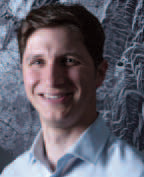
This year has been a very successful one for growth and innovation, and ICEYE is looking forward to the great opportunities ahead for the SAR satellite market in 2021.
www.iceye.com
Author Rafal Modrzewski, CEO and Co- Founder of ICEYE, is responsible for overseeing the organization’s growth and implementing ICEYE’s overall vision. Modrzewski brings with him deep domain expertise in engineering through his years as a researcher.
Despite the effects of a global pandemic, the satellite ground terminal market continues to evolve with customers of Mission Microwave leading the way in ground terminal innovation and performance. Mission Microwave finishes 2020 with another consecutive year of growth and the addition of many new customers.
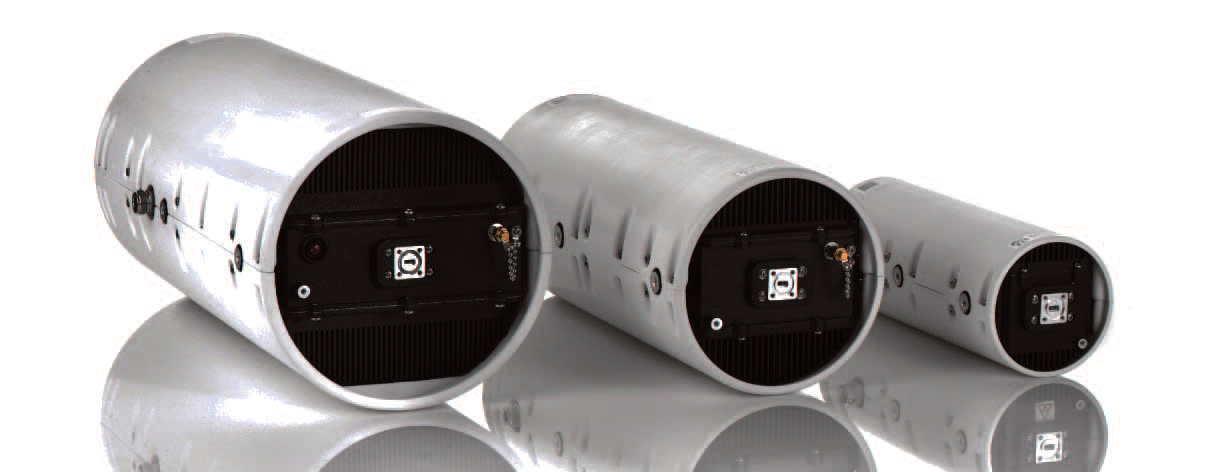
Mission Microwave’s Ka product family: Titan, Javelin
and Stinger.
No longer perceived as a young company, Mission’s customers have established the company as the de-facto leader in Ku- and Ka-band Block Upconverters (BUCs) for tactical and high-performance SATCOM terminals. Mission’s strength at meeting or exceeding customer’s expectations has continued throughout the Covid-19 pandemic, as we continue to fulfill orders and field new opportunities with as minimal disruption to production and service as possible given the circumstances.
Mission started 2020 with continued recognition as the industry-leading innovator in solid state power amplifier design. Following on the award at the VSAT Global conference for Flat Panel Antenna Technology, the company was recognized by the Pacific Telecommunications Council (PTC) in January as the Outstanding Satellite Company. Mission has been recognized by the global organizations entirely due the success of their customers. In recognition of their customers’ success, Mission presented several awards to these customers in March. Mission awarded customers for Supply Chain Excellence, Technology Innovation, International Distribution, Terminal Design, and Small Business Success.
Milestones Met in Terminal Certifications
The year 2020 saw the award of several terminal certifications using Mission Microwave BUCs. In addition to new terminal certifications, terminal upgrades replacing earlier generation SATCOM technologies were also a part of the Mission Microwave certification portfolio.
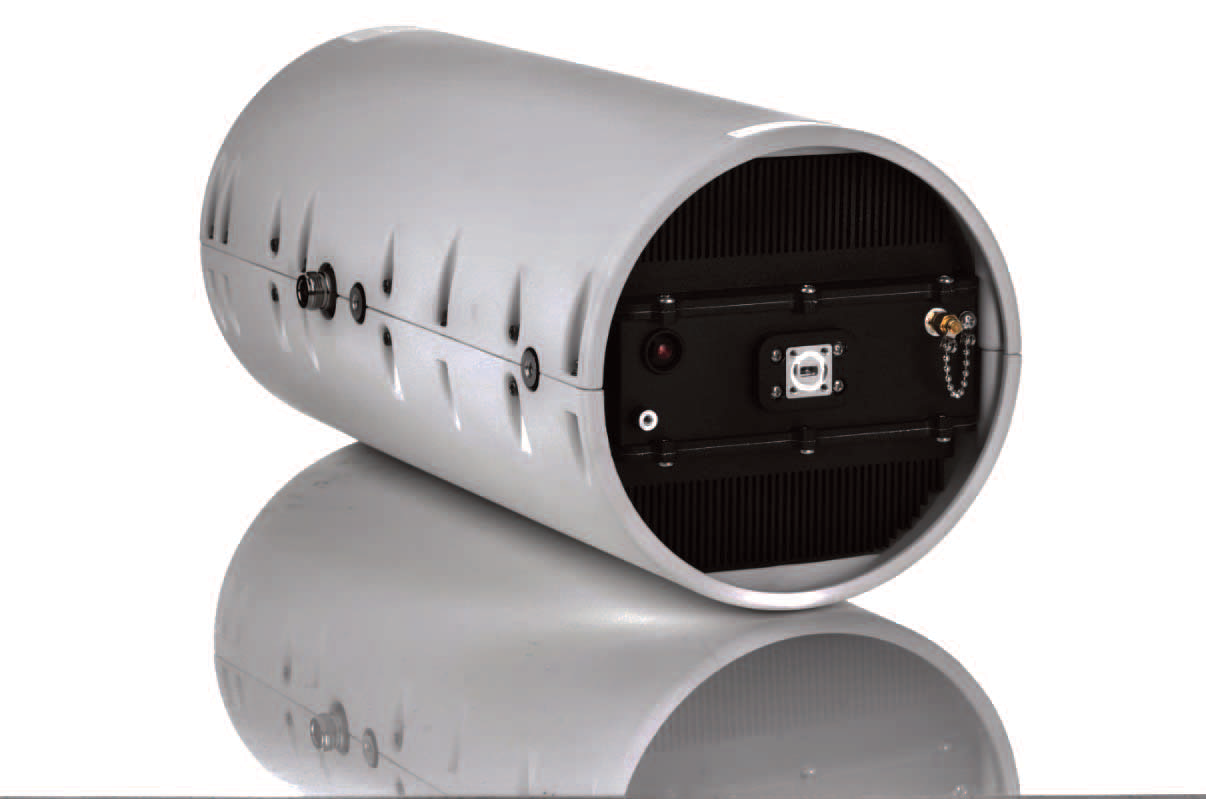
Mission Microwave’s Titan 200w BUC.
Mission customers received formal approval of our products ranging from 12 to 200 watts in Ka-band and over 100 watts in X-band. These approvals/certifications allow our customers and their critical end-users to bring Mission’s award winning strengths in size, weight and power (SWaP) coupled with proven reliability, to a wide range of terminals designed for government, industrial, and commercial applications.
In March, Mission Microwave customer Envistacom jointly announced that Mission is providing them with 200 Watt Ku- Band and 50 Watt Ka-band BUCS to replace legacy TWTA-based Up Converters. Envistacom cited Mission Microwave’s industry leading competency in designing compact and highly efficient amplifiers, enabling them to offer their customer an upgrade path that will extend the life and utility of their Tactical SATCOM fleet of over 600 terminals.
During the year, Mission was also able to fulfil another customer’s requirement for more than 60 BUCs on Satellite Transportable Terminals (STTs) for the US Department of Defense (DoD). This program was part of a much larger program that will use Mission’s 200 Watt Ka-band Titan BUCs to replace TWTA-based Block Upconverters.
International Growth
Through our international partner, Decibel Technologies in Dubai, Mission Microwave was able to support the rapid fielding of a large number of commercial terminals for a world-class telecommunications service provider in the Middle East. Decibel completed critical delivery milestones after an intensive testing program that confirmed the Mission Microwave BUCs could reliably withstand the harsh summer-time environment in the region.
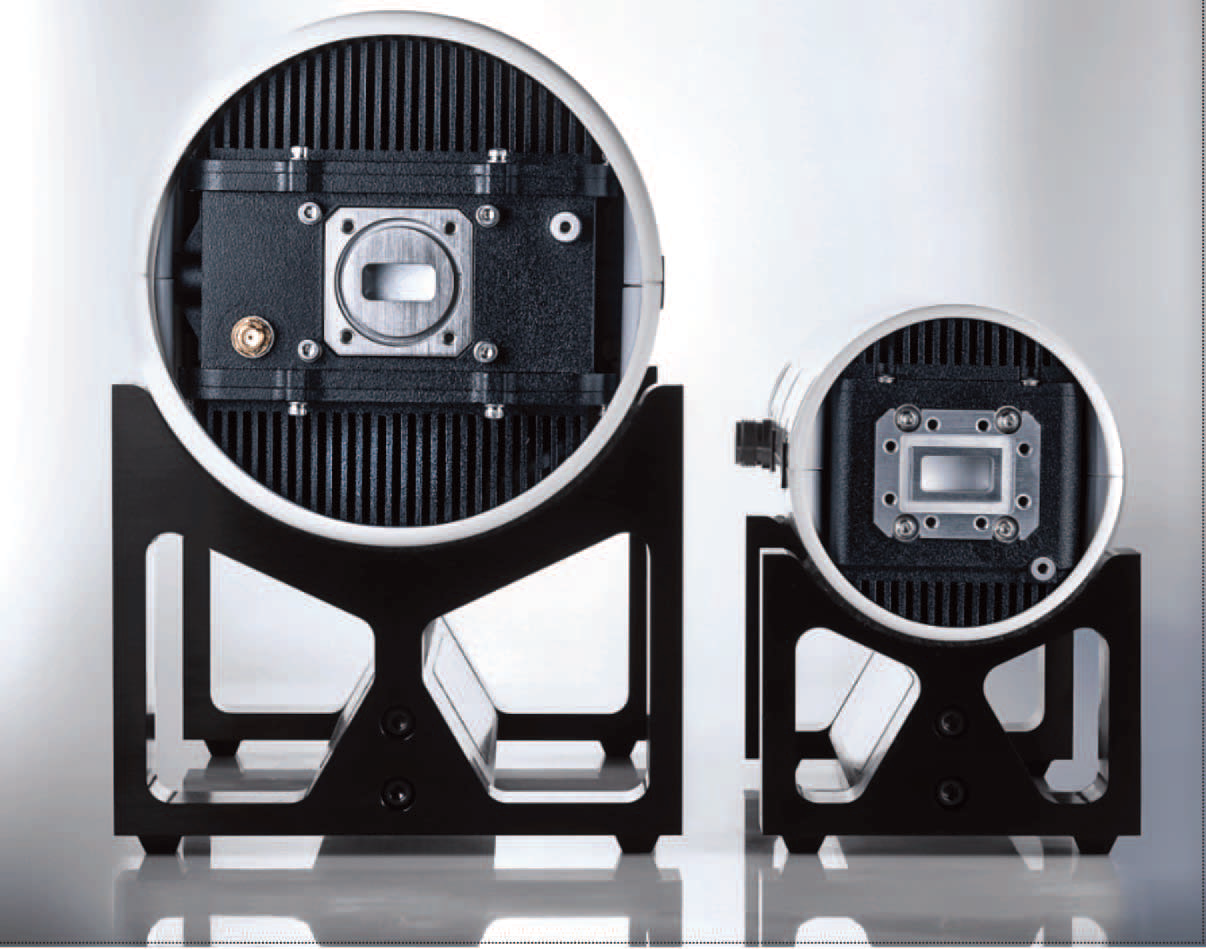
Leading Edge Constellations/Gateways
During 2020, Mission Microwave saw requests for their state-of-the-art Ka-band high power products from multiple customers intending to support emerging LEO/MEO network gateways and high throughput terminals. Mission’s products were used in well publicized tests on LEO networks and Mission is actively shipping early products for wideband gateways.
The introduction of Mission’s 400 Watt Wideband Ka-Band SSPA was followed by the first commercial deliveries of that product. The 400 Watt SSPA is a drop-in replacement for a leading 500 watt TWTA. Early customers for this product have been keen to being the roll-out of TWT replacements and expect to build their next generation networks with SSPA’s instead of TWTAs.
Maritime and Airborne Mobility
Similar to the lengthy certification cycle required by Government end-users, Mission’s customers in the airborne terminal industry work within a highly regulated and certification intensive environment. One of Mission’s customers announced a win in the business aviation market for their tail-mount antenna technology. This early win establishes Mission’s customers in that market segment as the leader in offering new and highly integrated solutions for the business aviation market.
Another Mission customer has now completed testing of a long-awaited solution for SATCOM capability on helicopters. A complex team made up of Mission’s customer and their industry partners has made it possible to provide high bandwidth SATCOM services to in-flight helicopters. Mission was very happy to see this new market segment enabled by a new class of compact yet high performing terminals that rely on Mission’s unique combination of RF performance, efficiency and optimal SWaP design for extremely rigorous environments.
In the Maritime Market, Mission’s customers continue to field advanced high-performance terminals. Although many deployment schedules have been delayed, Mission expects to gain market share in this segment as the industry recovers and the demand for high throughput services increases.
These wins in the commercial aviation and maritime markets signal that, while the global economy has had a tumultuous year, Mission is well positioned to continue to meet customer needs and adjust to market pressures caused by the pandemic. Forecasts for 2021 remain positive amid the crisis.
Expectations for 2021 and Beyond
Mission’s customers continue to involve our team in the designs of complex terminals for high performance and mobile applications. As our customers’ demands increase, we have had to expand our staffing and facility size. For 2021, we are in the planning stages for a relocation to a even larger facility.
Throughout 2021, Mission’s product lines will continue to support a wider range of terminal architectures and applications. Our customers increasingly require wideband solutions for Ka-band, and higher RF power levels and enhanced performance in all bands.

2021will be another banner year for this innovative leader in high power SATCOM BUCs. Both Mission Microwave and its customers are planning on more success and bringing new capabilities to end users as the satellite industry evolves beyond traditional architecture to mobile and non-GEO networks in 2021 and beyond.
missionmicrowave.com

Erik Roberts has been the Product Manager at Mission Microwave since early 2019, where he is responsible for product line sustainment, documentation and customer-facing tasks such as requirements compliance and post-sales engineering support. Erik has over 20 years’ experience in the satellite communications industry, holding senior level positions at Harris Corporation, General Dynamics Mission Systems (formerly General Dynamics SATCOM), DataPath and NASA Glenn Research Center. Erik has spent a significant portion of his career leading or contributing to tactical and strategic defense SATCOM systems development, obtaining ARSTRAT certification for a number of US ARMY terminal programs of record for PM-WIN-T and PM-TN. Erik obtained his Bachelor’s and Master’s degrees in Electrical Engineering from North Carolina Agricultural & Technical State University and Georgia Institute of Technology.
Momentus
Momentus is the first company providing in-space infrastructure services. The company was founded in 2017 and designs and builds space vehicles that are propelled by proprietary, water plasma thrusters. These vehicles ferry satellites to custom orbits after they have been delivered by conventional rockets to a first initial orbit.
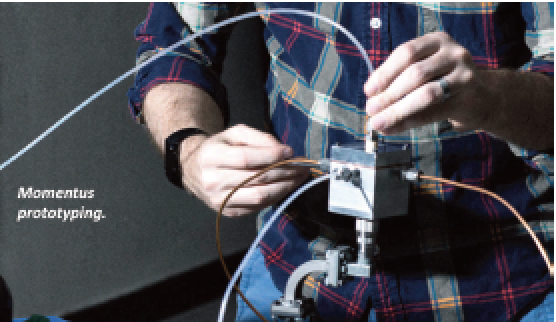
Momentus prototyping.
Momentus’ transportation services can also perform LTAN/LTDN for Earth Observation (EO) satellites and other applications, an important value-add for satellite analytics companies. Additionally, Momentus announced this year a new service, Hosted Payloads, whereby a company or research organization that does not wish to build an entire satellite bus system can essentially “rent” space on Momentus’ vehicles to perform their experiments.
In March, Momentus announced the purchase of rides on six SpaceX SmallSat Rideshare missions, including launches to Sun-Synchronous orbit (SSO) and one to mid-inclined low Earth orbit, which Momentus will provide Momentus’ customers access to their first initial orbit before a custom drop-off orbital parameter.
While the concept and value proposition already noted by publications such as SatNews, our announcement with SpaceX truly catalyzed an unprecedented wave of interest from potential customers. This was a great start to 2020.
Since then, Momentus has announced new customers and partnerships with NASA, Lockheed Martin, Sen, Alba Orbital, SatRevolution and others. The company has continued to double down on testing and rapid prototyping in the Santa Clara, California, HQ. Momentus’ lab is located near the historic Moffett Field NASA Ames Research Center and is filled with state-of-the-art vacuum systems, rapid prototyping equipment, test facilities, and a well-equipped machine shop with 3D printers, fittings and other equipment that our research engineers and technicians need.
Momentus’ engineers and scientists were already set up for speed and efficiency thanks to our emphasis on rapid prototyping. By the end of March, when it became clear that the novel coronavirus was spreading and that shelter in place orders would be likely for Santa Clara non-essential businesses, Momentus paid careful attention to detail and orders in order to keep our employees safe.
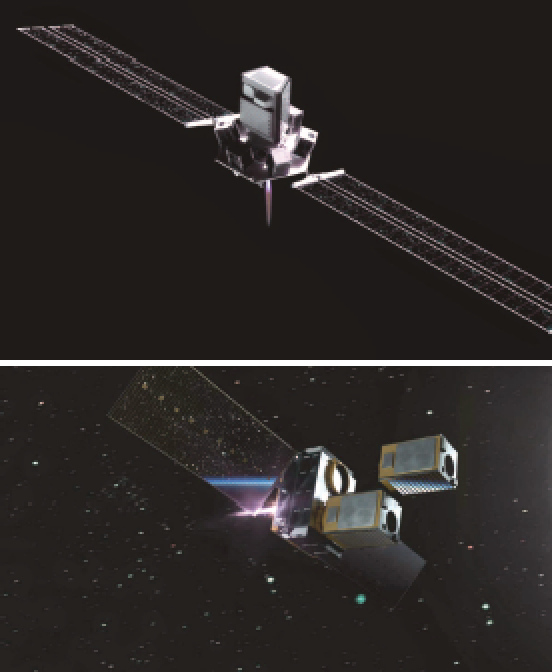 Momentus Vigoride deploying a customer’s spacecraft.
Momentus Vigoride deploying a customer’s spacecraft.Image is courtesy of the company.
Through strict in-person lab policies that went beyond the State and local recommendations, as well as a strong company culture for remote working, Momentus managed to weather the tragic pandemic and market slump and also contributed hundreds of sets of Personal Protective Equipment (PPE) to Bay Area hospitals and other medical facilities across the nation. The equipment became preferred stock by several health care facilities, including major hospitals in New York City.
By May, Momentus had made contract announcements with NCKU Space Laboratory and ODYSSEUS Space, Alba Orbital, SatRevolution and Sen. The company then kicked off June with two more announcements: OrbAstro and EnduroSat. Shortly after that, the execution of a launch agreement with ISIS for five Vigoride shuttle services from 2021 through 2022 was announced — the largest payload commitment in a single contract up to that date.
Momentus then unveiled service agreements with Astrogate Labs and ARCA Dynamics. These were the first contracts with Indian and Italian customers, respectively, for
Momentus and underscored the huge potential and continued approach for the business of unlocking and enabling a truly global customer base.
At the beginning of August, the Momentus Hosted Payloads service was announced, allowing anyone to rent a platform for in-space demonstrations at a fraction of the cost of designing, building, launching and operating a dedicated smallsat. Later the same month Momentus announced a launch service agreement for a 3U satellite in Lockheed Martin and SERC (Space Engineering Research Center) University of Southern California’s (USC) La Jument smallsat program. Then, in September, an award supporting a NASA Pathfinder mission for The Time-Resolved Observations of Precipitation structure and storm Intensity Constellation of Smallsats (TROPICS) to Low Earth Orbit (LEO) in June of 2021.
In September, Momentus welcomed Dr. Fred Kennedy (formerly the inaugural Director of the Space Development Agency) onboard as President, and Jikun Kim, formerly Chief Financial Officer of Formlabs, as CFO.
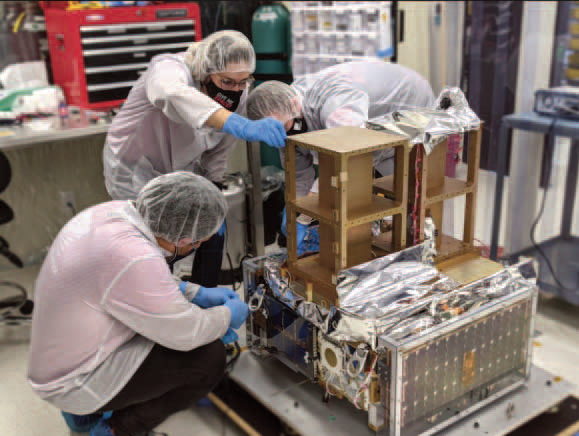
Closing September, Momentus announced another contract with India’s Pixxel, who are building a constellation of cutting-edge, Earth imaging smallsats that can provide real-time remote sensing data across the world, and with ProXops to transport multiple satellites for the Houston, Texas, company’s VariSat constellation.
In early October, Momentus announced another contract for two satellites supporting Skykraft’s Space Based Air Traffic Management constellation. The first smallsat is to be deployed via a new separation ring named EOS and developed by MECANO ID under a CNES contract, thanks to the partial financing of the Future Investment Plan.
October was also the month that Momentus took the wraps off a SPAC with Stable Road Acquisition Corp. The business combination agreement, which puts Momentus on the path toward becoming a publicly traded company, is similar to an Initial Public Offering (IPO), as upon the successful close of this transaction, Momentus will offer shares of stock to the public for the first time. This decision was made so that Momentus will have access to a permanent source of capital that provides significant growth opportunities for all stakeholders.
Following on the heels of the SPAC announcement, Momentus announced a launch service agreement to deploy two satellites for Kepler’s GEN1 constellation in 2021. A spot on the December 2020 mission went to Gran System’s 2U cubesat NUTSAT, which will demonstrate and enhance commercial aviation safety technology for the Taiwanese company.
Closing out October, Momentus shared that the company will directly support Lockheed Martin’s trailblazing, cryogenic fluid management demo mission — which is a part of the prestigious NASA-backed “Tipping Point” program for Artemis — and that three independent directors will join the board of advisors, following the pending SPAC business transaction.
The three experienced directors are Chris Hadfield, David Siminoff and Vince Deno. Hadfield is a decorated astronaut who served on the International Space Station (ISS) and, in previous careers, worked closely with NASA and the Canadian Space Agency (CSA). David Siminoff has a distinguished career as an entrepreneur, investor, and board member with numerous high profile technology companies, and Vince Deno is a technology entrepreneur and venture capitalist and has extensive experience in the aerospace and defense industry, including more than a decade at Millennium Space Systems where he held various positions that included company President, Chief Operating Officer and Chief Innovation Officer.
For the first time in human history, we are moving beyond the surface of the Earth. As a biological species, we are mastering a new element — the cosmos. However, the mastering of new territories is impossible to imagine without reliable and well-suited transport.
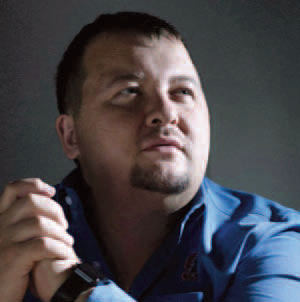
Following Momentus’ strong performance in awarded contracts from space industry stalwarts and up-and-comers, as well as the market posturing afforded via the SPAC with Stable Road Acquisitions, it is clear that Momentus will lead in space infrastructure’s next chapter.
momentus.space
Author Mikhail Kokorich is the Founder and Chief Executive Officer of Momentus.

